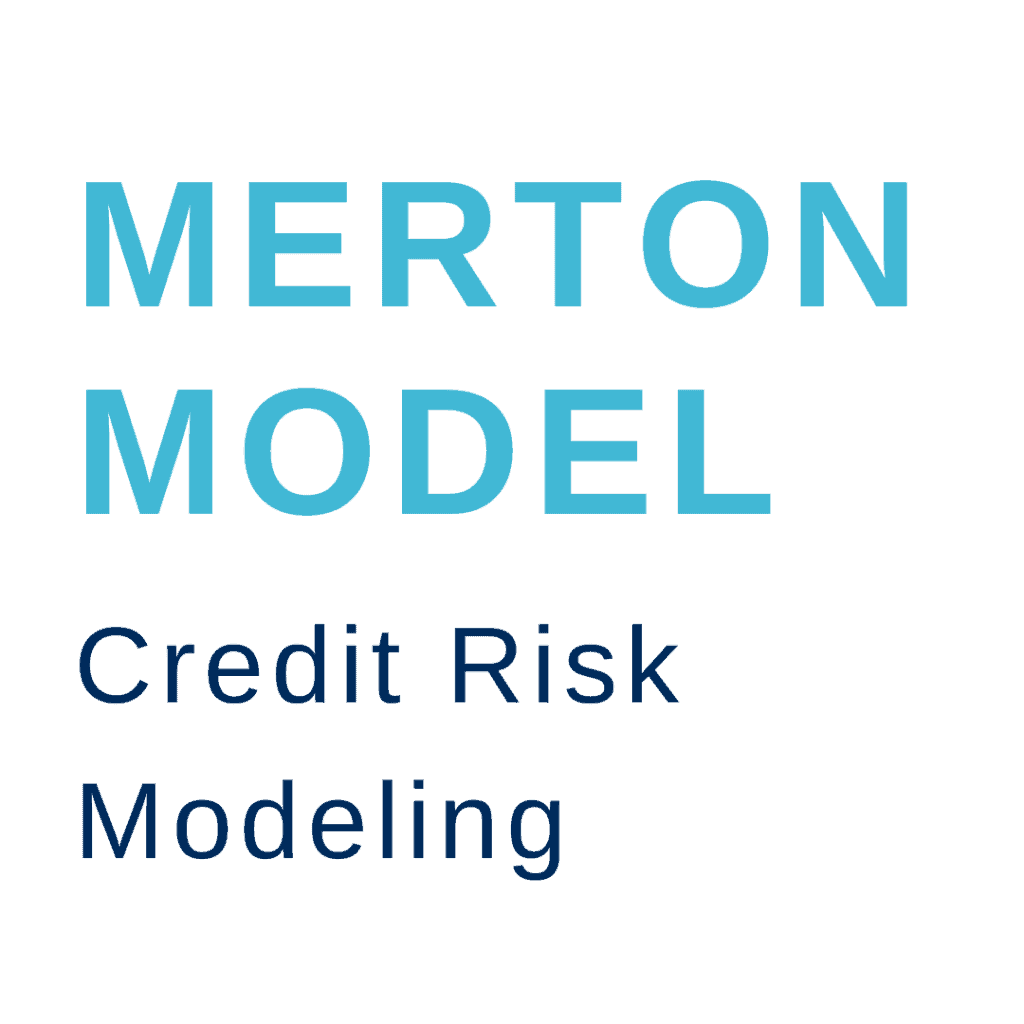The Merton Model is based on the relationship between capital structure and default from the perspective of the shareholder.
It’s a fundamental approach in the field of credit risk modelling. The Merton Model, developed by economist Robert C. Merton in the early 1970s, is an application of option pricing theory to corporate debt.
The model treats the equity of a firm as a call option on its assets, with the strike price being the debt’s face value that needs to be paid at maturity.

It assumes that the value of a company’s assets follows a stochastic process, specifically a geometric Brownian motion. The model requires the estimation of the value of the firm’s assets and the volatility of that value.
The likelihood of default is modelled as the probability that the value of the firm’s assets will fall below the outstanding debt at the time of debt maturity. Essentially, if the firm is unable to meet its debt obligations (i.e., the asset value is less than the debt value), it defaults.
The model can be used to estimate credit spreads and credit ratings by analysing the probability of default and the expected loss in the case of default.
While innovative, the Merton Model has some limitations. Estimating the market value of a firm’s assets and their volatility can be challenging, especially for private companies. Additionally, the assumption of a constant interest rate and the neglect of short-term liabilities can limit the model’s accuracy.
The Merton Model marked a significant step forward in understanding and quantifying credit risk and has influenced the development of more advanced credit risk models and methodologies used today.
Imagine a company, ACC Corp, which has issued bonds (debt) and also has outstanding equity (shares). The bonds are due in 5 years, and the total face value of the debt is $100 million. The current market value of ACC Corp’s assets is $150 million, and the volatility (standard deviation) of the asset value is estimated to be 25% per annum. The risk-free interest rate is 3% per annum.
We want to determine the probability of ACC Corp defaulting on its debt at maturity and the value of its equity.
The probability of default at maturity is the probability that the value of the company’s assets will be less than the debt at maturity. This is given by N(−d2), where N is the cumulative distribution function of the standard normal distribution.
The equity value can be calculated using the Black-Scholes option pricing formula:
import numpy as np
import scipy.stats as si
# Parameters
V = 150e6 # Current market value of assets
sigma_V = 0.25 # Volatility of asset value
D = 100e6 # Face value of debt
T = 5 # Time to maturity in years
r = 0.03 # Risk-free interest rate
# Calculating d1 and d2
d1 = (np.log(V / D) + (r + sigma_V**2 / 2) * T) / (sigma_V * np.sqrt(T))
d2 = d1 - sigma_V * np.sqrt(T)
# Probability of Default
PD = si.norm.cdf(-d2)
# Equity Value as a Call Option
equity_value = V * si.norm.cdf(d1) - D * np.exp(-r * T) * si.norm.cdf(d2)
print(f"Probability of Default: {PD:.4f}")
print(f"Equity Value as a Call Option: {equity_value:.2f} USD")
Based on the calculations using the Merton Model for the given scenario
These results provide insights into the credit risk associated with ACC Corp. The Merton Model helps in quantifying this risk, which is crucial for investors, creditors, and the company’s management.